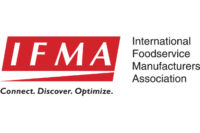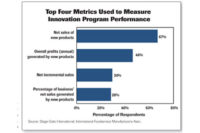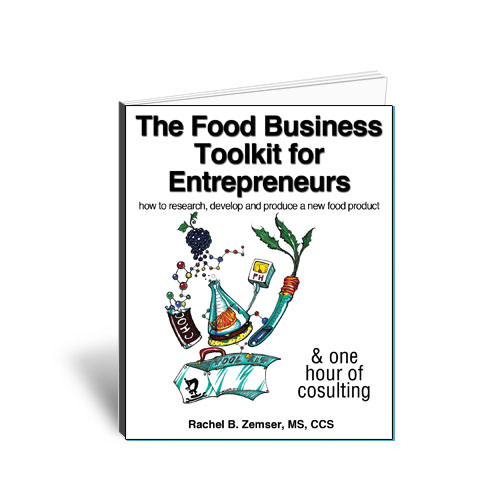Foodservice: New Product Best Practices
International Foodservice Manufacturers Association, Stage-Gate International learn that specific practices help increase the odds of new product development success in foodservice.







|
| Want to look inside Darden’s Restaurant Support Center? Foodservice food and beverage manufacturers should aspire to become “strategic new product partners.” |
Foodservice professionals know innovations grow business. However, the new product development (NPD) process is one of the riskiest activities a business can undertake. These risks are further amplified in foodservice, due to the complexity of the industry and the fact that there have been no standard languages, metrics or processes used amongst the multiple trading partners.
Our work through the Center of Innovation Excellence (CIE) showed that successful NPD in foodservice depends on many things; however, there were specific practices that our most recent research highlighted as critical.
Evaluating, Selecting Projects
Customers are increasingly sophisticated regarding NPD and what works best for their brand/menus. Most operators are already in Stage Two (Feasibility) or Stage Three (Development) of their NPD process before they invite a manufacturer to join. Often, that means the operator wants a sample. As simple as that seems, it most certainly isn’t from the manufacturer’s viewpoint. Manufacturers have to quickly move through their own internal NPD process, possible progressing into Stages Three or Four (Validation) before a realistic prototype is produced.
Obviously, speed be-comes critical. Thus, one of the most important ways foodservice leaders can support a successful product innovation is to make timely decisions. Failure to do this can and will impact your customer, your business strategy and your speed-to-market.
One way to quicken the process is to define criteria that will help determine whether to continue or stop a project. Our research concludes that criteria should be broader than just financial gain and should include factors such as strategic fit; product and competitive advantage; market or channel attractiveness; competency; and technical feasibility.
Successful organizations create evaluation scorecards to manage criteria, quantify the merits of each project and capture the guidance of each decision-maker. “New Product Development: Best Practices in Foodservice” provides a tool to score projects using a scale of 1-10. Each decision-maker rates the project, and the scores are combined and averaged to give the project an “attractiveness” score. Low scores and scores with high deviations deserve discussion, because they indicate problem areas. An example of this may be an innovation that provides a significant financial reward but is technically risky. The score enables organizations to force-rank projects into a prioritized list -- so it’s easier to focus resources on the highest priority projects. Even more important than the score itself is the rich business discussion that occurs among the decision-makers, a process of facilitating alignment.
For more information about the “New Product Development Project Evaluation Scorecard,” go to ifmaworld.com
To align the various functional players on a project team and speed decisions, an executive summary featuring the most relevant information about the project is made available to decision-makers. As decision-makers evaluate the project across the criteria, it becomes evident that certain projects are not worth the time or the outlay of resource to continue.
Deciding to kill a project is a discipline many lack -- and for a variety of reasons. However, one of the most common reasons many small- or low-risk projects (like customer requests) are not killed is because they are inexpensive and, therefore, escape the rigor that other business investments might otherwise endure. However, this is a dangerous falsehood and may be costing you more than you think. When these small- and low-risk projects are added up and viewed as a portfolio, they can represent a very high percentage of your total NPD spending, yet offer little financial or strategic advantage. To cultivate “kill discipline” earlier in the process, adopt the following:
- Use tools like scorecards to enable objective decisions.
- Clarify hurdles and expectations upfront.
- Nominate the right person to deliver “kill decisions” in person.
- Be transparent and share specific information that led to the decision.
- Confirm the importance of a “correct kill” decision to the organization.
- Offer your customer alternative options that are mutually more rewarding.
New Product Collaboration
In foodservice, collaboration means working cooperatively with customers, internal functions and/or supply-chain partners. There are three key benefits derived by collaborating to develop new products:
- Revenue: Realize revenue that is not possible without collaborating.
- Capability: Access to IP or technology not present within one company.
- Speed: Accelerate completion by leveraging partners’ resources and/or capacity.
The overall goal always is to improve product performance and results. Collaboration is challenging, however. Foodservice is a business-to-business environment, and one supplier’s product may be a component of the customer’s output. It’s not just innovating together -- it’s aligning and managing business and cultural needs, as well. Because of this, it’s critical for manufacturers to not only choose the right projects in which to invest, but also choose the right partners with whom to collaborate.
For manufacturers, collaboration fails when the following occurs:
- Inability to kill a deteriorating project
- Lack of alignment among partners
- Inappropriate or insufficient resource allocation to key roles, like project leaders, customer liaison, etc.
NPD collaborations can be successful when business leaders provide clarity around the types of relationships a company pursues. “New Product Development: Best Practices in Foodservice” provides an “NPD Partner Pyramid” outlining partner types and the amount of resources each type requires. (See chart: “New Product Partner Pyramid.”)
A multitude of dimensions are offered, such as degree or risk vs. reward, product customization, partner values, relationship’s complexity, commitment levels and others. After these dimensions are outlined, the partner is defined as a supplier; a preferred supplier; an enabling supplier; or a strategic new product partner.
Supplier: Relationship is largely transactional, and R & D/NPD resources are not involved.
Preferred Supplier: Relationship is built on supplier’s product, either as-is or with minor modifications. The customer does not typically invest their NPD resources.
Enabling Supplier: Relationship exists because of the supplier’s product, IP or technology is at the core of the customer’s defined solution. NPD resources of both parties are allocated, and coordination is needed (example: unique ingredient must “fit” into a new menu offering).
Strategic New Product Partner: Relationship is highly collaborative, guided by jointly developed product vision and performance goals. This is the most highly engaged type of collaboration and requires sophisticated collaboration skills and NPD resources.
The purpose of the Pyramid is to guide business leaders to more easily recognize the degree of risk of product development and partner collaboration to enable timely project selection and resource allocation.
Summary
What we have learned though this work is that effective project selection requires timely decisions and discipline. It also showcases that new product collaboration can unlock significant value, but partners must be chosen wisely.
For more information on “New Product Development: Best Practices in Foodservice” and other research from The Center of Innovation Excellence, or to discover the benefits of being an IFMA member, go to ifmaworld.com.
Looking for a reprint of this article?
From high-res PDFs to custom plaques, order your copy today!









